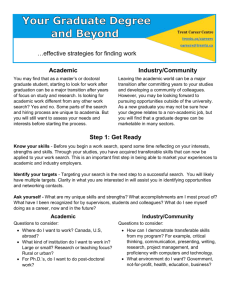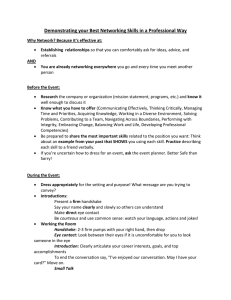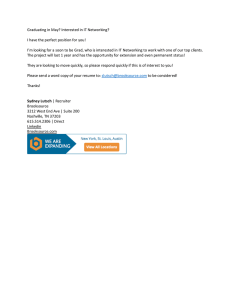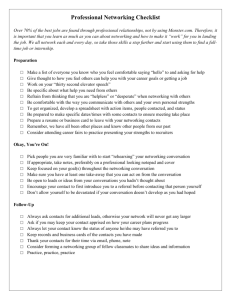The Quick Guide to Networking
advertisement
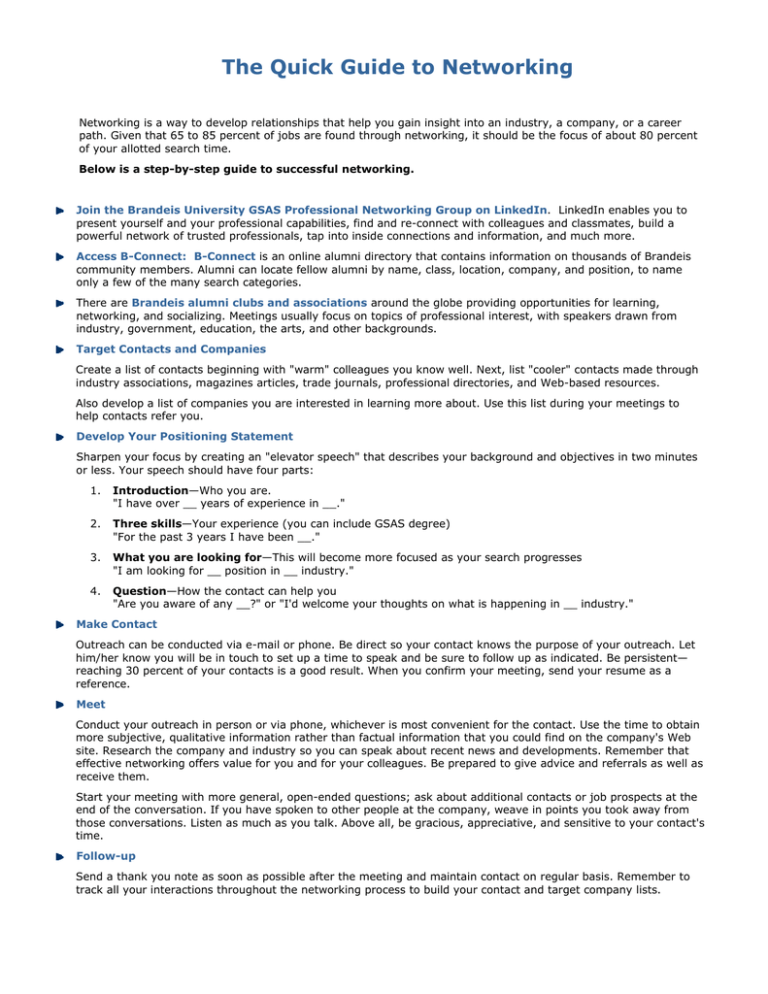
The Quick Guide to Networking Networking is a way to develop relationships that help you gain insight into an industry, a company, or a career path. Given that 65 to 85 percent of jobs are found through networking, it should be the focus of about 80 percent of your allotted search time. Below is a step-by-step guide to successful networking. Join the Brandeis University GSAS Professional Networking Group on LinkedIn. LinkedIn enables you to present yourself and your professional capabilities, find and re-connect with colleagues and classmates, build a powerful network of trusted professionals, tap into inside connections and information, and much more. Access B-Connect: B-Connect is an online alumni directory that contains information on thousands of Brandeis community members. Alumni can locate fellow alumni by name, class, location, company, and position, to name only a few of the many search categories. There are Brandeis alumni clubs and associations around the globe providing opportunities for learning, networking, and socializing. Meetings usually focus on topics of professional interest, with speakers drawn from industry, government, education, the arts, and other backgrounds. Target Contacts and Companies Create a list of contacts beginning with "warm" colleagues you know well. Next, list "cooler" contacts made through industry associations, magazines articles, trade journals, professional directories, and Web-based resources. Also develop a list of companies you are interested in learning more about. Use this list during your meetings to help contacts refer you. Develop Your Positioning Statement Sharpen your focus by creating an "elevator speech" that describes your background and objectives in two minutes or less. Your speech should have four parts: 1. Introduction—Who you are. "I have over __ years of experience in __." 2. Three skills—Your experience (you can include GSAS degree) "For the past 3 years I have been __." 3. What you are looking for—This will become more focused as your search progresses "I am looking for __ position in __ industry." 4. Question—How the contact can help you "Are you aware of any __?" or "I'd welcome your thoughts on what is happening in __ industry." Make Contact Outreach can be conducted via e-mail or phone. Be direct so your contact knows the purpose of your outreach. Let him/her know you will be in touch to set up a time to speak and be sure to follow up as indicated. Be persistent— reaching 30 percent of your contacts is a good result. When you confirm your meeting, send your resume as a reference. Meet Conduct your outreach in person or via phone, whichever is most convenient for the contact. Use the time to obtain more subjective, qualitative information rather than factual information that you could find on the company's Web site. Research the company and industry so you can speak about recent news and developments. Remember that effective networking offers value for you and for your colleagues. Be prepared to give advice and referrals as well as receive them. Start your meeting with more general, open-ended questions; ask about additional contacts or job prospects at the end of the conversation. If you have spoken to other people at the company, weave in points you took away from those conversations. Listen as much as you talk. Above all, be gracious, appreciative, and sensitive to your contact's time. Follow-up Send a thank you note as soon as possible after the meeting and maintain contact on regular basis. Remember to track all your interactions throughout the networking process to build your contact and target company lists.
